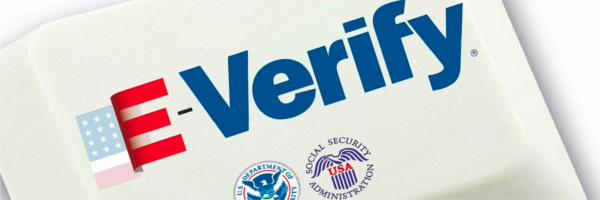
On Aug. 1, 2023, the U.S. Citizenship and Immigration Services (USCIS) published a new version of its Employment Eligibility Verification form, also known as Form I-9. Employers are required to use the new form exclusively beginning on Nov. 1, 2023.
The Form I-9 instructions also clarify procedures for employers that are eligible to utilize remote examination as an alternative to physical examination of employees’ documentation. Employers enrolled and participating in E-Verify may choose to examine documents remotely.
Dates of Use
The previous version of this form expired on Oct. 31, 2022, but USCIS instructed employers to continue using this expired form until the new version was published.
USCIS has indicated that employers may begin using the new form immediately and that use of the expired form (dated “10/19/2019”) will be allowed through Oct. 31, 2023. Employers can find the publication date of Form I-9 in the lower left corner of the form.
Beginning Nov. 1, 2023, employers will need to use the newest version of the form. Employers that use previous versions of the form after this date will not be in compliance with federal employment eligibility verification requirements. Use of the revised Spanish version of the form is available for use in Puerto Rico only.
As outlined below, employers enrolled and participating in E-Verify may choose to examine documents remotely. However, employers that were not enrolled in E-Verify during the COVID-19 flexibilities must complete an in-person physical examination by Aug. 30, 2023.
Form I-9 Updates
USCIS has published a complete list of Form I-9 updates. Some of the most notable changes include:
- Sections 1 and 2 have been reduced to a single sheet; all previous fields remain, but some fields have been merged
- The preparer/translator certification area has been moved to a standalone supplement that employers can use as necessary for initial verification or recertification
- Section 3 (Reverification and Rehire sections) has been moved to a standalone supplement that employers can use as necessary
- The list of acceptable documents now includes some acceptable receipts, guidance and links to information on automatic extensions of employment authorization documentation.
The new Form I-9 includes updated instructions. These instructions have been condensed from 15 to eight pages and include additional definitions, streamlined processes, and an explanation of how to use the new check boxes to indicate when Form I-9 documents were examined remotely.
Remote Document Verification
Under current requirements, employers must physically inspect I-9 acceptable documents to certify their employees are authorized to work in the United States. However, the new form includes alternative remote verification procedures employers enrolled in E-Verify can use to comply with their Form I-9 obligations.
USCIS has published instructions for remote document verification, as outlined in the following sections.
E-Verify Participation Required
Employers must participate in E-Verify and be in good standing if they want to examine employee documents remotely. New E-Verify enrollees and users must complete an E-Verify tutorial that includes fraudulent document awareness training. Existing employers already enrolled in E-Verify have access to this tutorial and may retake it at any time.
E-Verify employers are in good standing if they:
- Are enrolled in E-Verify with respect to all hiring sites that use the alternative procedure to examine documents remotely
- Use E-Verify to confirm the employment eligibility of newly hired employees in the United States
- Comply with all other requirements of the E-Verify program.
Remote Examination of Documents Procedures
To comply with procedures for the remote examination of documents, employers must:
- Examine copies (front and back, if the document is two-sided) of Form I-9 documents or an acceptable receipt to ensure that the documentation presented reasonably appears to be genuine and relates to the employee
- Conduct a live video interaction with the individual presenting the document(s) to ensure that the documentation reasonably appears genuine and relates to the individual. The employee must first transmit a copy of the document(s) to the employer and then present the same document(s) during the live video interaction
- Retain a clear and legible copy of the documentation (front and back if the documentation is two-sided).
In addition, employers must indicate that they used an alternative procedure on Form I-9 by:
- Checking the box on the Form I-9 dated “08/01/2023”; the box indicates that they used an alternative procedure in the Additional Information field in Section 2; or
- Annotating the Form I-9 dated “10/21/2019,” with “Alternative Procedure” in the Additional Information field in Section 2.
Employers using the remote verification option should also review the instructions for rehire, recertification and the retention of documents.
Sign up for our newsletter.




